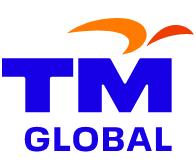5G demands high speed and low latency. So what is needed for ideal backhaul solutions?
Backhaul is key to the success of any service provider and more so in the case of 5G where the speeds are ultra-high, and latency is ultra-low. However, existing backhaul networks cannot support the needs and requirements of 5G as they were built for a different generation of mobile technology.
5G is poised to revolutionise the way businesses generate, share, and process data. Be they IoT networks or connected vehicles or automated factories or remote healthcare or streaming media, companies across industries will generate and transmit unprecedented quantities of data at speeds and latency never seen before. And all this data would have to be transmitted over vast distances and processed either at the edge or in the cloud equally quickly.
This deluge of data at unprecedented speeds and demanding ultra-low latency is poised to add a tremendous amount of pressure on the backhaul networks of service providers. The existing backhaul set up, which are optimised to meet 4G requirements, are unlikely to meet the demands generated by 5G and will need a rapid overhaul for mobile operators to effectively roll out their 5G services.
The Importance of Backhaul
Backhaul performance, capacity, and reliability are integral to meeting the transport demands of mobile networks as the increasing volume of data needs to be transported from the radio access network (RAN) to the core of a mobile network. This critical link between cell tower location and network core is a central component of a wireless network infrastructure.
However, with each new generation of mobile technology, the pressure on backhaul networks increases tremendously as there’s a quantum leap in data speeds and volume. A backhaul that’s not up to the mark can cause packet loss, high latency, and carrier jitter among other problems for mobile operators, thus severely compromising quality of service and customer experience.
As a result, building an efficient backhaul is critical for 5G service providers to enable high speeds, large capacities, and open up high bandwidth at low latency for numerous connected devices.
5G Impact on Backhaul
5G will have a significant impact on backhaul networks of mobile operators. According to GSMA, mobile traffic is estimated to increase to 6,268 exabytes (1 EB equals 1 billion GB) annually by 2027 in the top 30 markets, with 5G accounting for 83% of total traffic by the end of the period.
As one 5G end-user can conceivably consume as much wireless capacity as 10 or more 4G LTE users, the impact of 5G on backhaul networks will be unlike any previous generation of mobile technology. A diversity of use cases, Multiple Input Multiple Output (MIMO), and network slicing are some of the key factors influencing backhaul for 5G.
Facilitated by network slicing, 5G supports three main categories of 5G use cases—enhanced Mobile Broadband (eMBB), massive Machine-Type Communications (mMTC), and ultra-reliable Low-Latency Communications (urLLC). And each of these use cases add their own different type of pressure—from high-speed bandwidth to ultra-low latency—on the backhaul networks.
As a result, at peak throughput and download speeds of up to 10Gbps, exponentially higher data loads must be “backhauled” from infinitely more locations at ever faster rates at ever decreasing latency.
Way forward
The backhaul network is commonly Ethernet-based (carrying IP payloads), but can also be dark fibre, or microwave and millimetre wave-based wireless. Each backhaul technology has its merits and its place, meaning a mix of all will be used for 5G.
Packet-based Ethernet supports backhaul for 5G effectively. Bit rates and link distances have increased through the introduction of fibre-based Ethernet, and bandwidth limitations have been alleviated. But an Ethernet-based infrastructure may not be available for every location that an operator needs to connect.
At the same time microwave and millimetre wave-based backhaul has been taking significant technological leaps forward and has been ready to support 5G for some time. All its enhanced capabilities are now coming into play as 5G is switched on at an incredible pace. It is mainly used when high-speed wireline connectivity to telecom sites (typically via Ethernet-based fibre optic connectivity) is unavailable and when rapid deployment is required. However, since spectrum is a finite precious resource, getting the required spectrum can be a challenge and be expensive.
Dark fibre is when operators deploy their own optic fibre infrastructure or lease unused (dark) fibre from a third party that already owns the infrastructure to connect their RAN to the core mobile network. However, laying their own fibre infrastructure can be expensive or the fibre may not be readily available when leasing from a third-party.
Mobile operators will have to use a judicious mix of all the different options for their backhaul network depending on cost, efficiency, performance, and use case.
The Ideal Backhaul Solution
Hence, while rolling out 5G-based services—be they for IoT networks or connected vehicles or automated factories or remote healthcare or streaming media—service providers, including OTT players and other industry specific service providers, need to make sure their backhaul is able to support their demands imposed by 5G. Service providers will need to improvise their network capacity to cater to an even greater surge in bandwidth demand.
TM Global provides comprehensive backhaul solutions over Ethernet to meet all the demands of service providers. With a wide and comprehensive network, TM Global’s Ethernet-based backhaul solutions provide more bandwidth and better quality of service with higher degrees of flexibility and better scalability.
TM Global’s comprehensive wholesale ethernet-based backhaul solutions are developed to fulfil the backhaul requirements of all service providers. It provides end-to-end transport of voice and data traffic according to a specific quality of service that is specifically geared towards meeting 5G requirements.
It offers a cost-effective solution and allows the service providers to focus on their core competence and business, specifically addressing the customers’ needs. With enhanced performance and objective parameters in line with industry standards that are tailored for backhaul application, TM Global’s Ethernet-based backhaul solutions are suitable for all service providers offering 5G-based services, irrespective of whether they are mobile operators or OTT players or those offering industry specific solutions.








